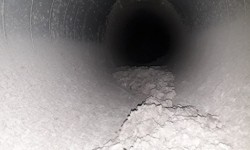The forward thinking air filter company.
Duct cleaning service
Duct Cleaning Guidelines
The Health and Safety Executive (HSE) recommend that in assessing the hygienic condition of ventilation systems that reference be made to the Building & Engineering Services Association (B&ES) TR19 Guide to Good Practice Internal Cleanliness of Ventilation Systems. This report has used the guidance set out in B&ES TR19 for the quantitative assessment of surface contamination and the location of access doors necessary for inspection and cleaning of the ducted air distribution systems.
In November 2011 a national standard, BS EN 15780:2011 Ventilation for buildings – Ductwork – Cleanliness of ventilation systems, was introduced and which applies to both new and existing ventilation and air conditioning systems. It specifies the assessment criteria of cleanliness, cleaning procedures and the validation of cleaning projects when applied to these systems.
Cleanliness of ventilation systems is considered important for human comfort and health, energy consumption, system service life and for cleanliness of operations or processes carried out in the ventilated area.
The national standard specifies general requirements and procedures necessary in assessing and maintaining the cleanliness of ducted ventilation, including:
- Cleanliness quality classification.
- How to assess the need for cleaning (visual, measurements).
- Assessment frequency (general guidance)
- Selection of cleaning method.
- How to assess the results of cleaning.
Cleanliness Quality Classification BS EN 15780
These levels of cleanliness quality class should be generally applied as follows:
Table A.1 – Typical applications of cleanliness quality classes
| Quality Class | Typical examples |
|---|---|
| Low | Rooms with intermittent occupancy e.g., storage rooms, technical rooms |
| Medium | Offices, hotels, restaurants, schools, theatres, residential homes, shopping areas, exhibition buildings, sport buildings, general areas in hospitals and general working areas in industries |
| High | Laboratories, treatment areas in hospitals, high quality offices |
Inspection should be regular, cleaning subject to inspection.
Table A.2 – Recommended inspection intervals according to cleanliness quality class, in months
| AHU | Filters* | Humidifiers | Ducts | Terminals | |
|---|---|---|---|---|---|
| Low | 24 | 12 | 12 | 48 | 48 |
| Medium | 12 | 12 | 6 | 24 | 24 |
| High | 12 | 6 | 6 | 12 | 12 |
Air handling units equipped with humidification or adiabatic cooling systems or located in mild wet weather conditions should be assessed at least twice a year whatever the use of the building.
* Filters should be inspected and maintained according to the manufacturer’s recommendations, with these intervals as the minimum ones.
Cleanliness class quality measurements – visual inspection
Visual inspection method is the basic method to evaluate the cleanliness of the system. Although it is subjective, as such it gives a very good, low-cost and instant estimate of the condition on the ventilation system surfaces. It is usually good enough to detect e.g., extreme microbial growth such as slime in water reservoirs, and deposits from major malfunction of filtration, and to reveal lack of maintenance. Visual inspection may be assisted using cameras, endoscopes and robotic cameras with recording capability and the use of standard forms and notebooks can make the inspection more systematic. N.B. Inspectors should be trained and have a wide range of experience from a range of systems.
BS EN 15780 Table A.3 – Acceptable cleanliness levels
| Cleanliness quality class | Acceptable cleanliness level Supply ductwork |
Acceptable cleanliness level Recirculation or secondary air ductwork |
||
|---|---|---|---|---|
| Low | <4.5 g/m2 | 90µm | <6.0 g/m2 | 120µm |
| Medium | <3.0 g/m2 | 60µm | <4.5 g/m2 | 90µm |
| High | <0.6 g/m2 | 12µm | <3.0 g/m2 | 60µm |
| Cleanliness quality class | Acceptable cleanliness level Supply ductwork |
Acceptable cleanliness level Recirculation or secondary air ductwork |
||
|---|---|---|---|---|
| Low | <4.5 g/m2 | 90µm | <6.0 g/m2 | 120µm |
| Medium | <3.0 g/m2 | 60µm | <4.5 g/m2 | 90µm |
| High | <0.6 g/m2 | 12µm | <3.0 g/m2 | 60µm |














